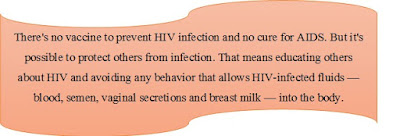HIV Services for Young People
Lack of access to HIV services Many young people report that healthcare workers have negative attitudes towards young people seeking healthcare services, particularly those having sex under the national age of consent, engaging in homosexual relationships or using drugs. This deters them from seeking contraception, sexually transmitted infection (STI) check-ups and HIV testing. Some young people are also fearful of stigma from their partners, families and communities, making them unwilling to come forward for HIV testing in case their families find out that they are sexually active or living with HIV. Other sexual and reproductive health services deny access to people who are not married. Gender inequality and HIV vulnerability Of all adolescents aged 15-19 who were diagnosed as HIV-positive during 2012, two-thirds were girls. Globally, young girls are more vulnerable to HIV for a number of reasons, but universally the level of HIV knowledge among girls i...


